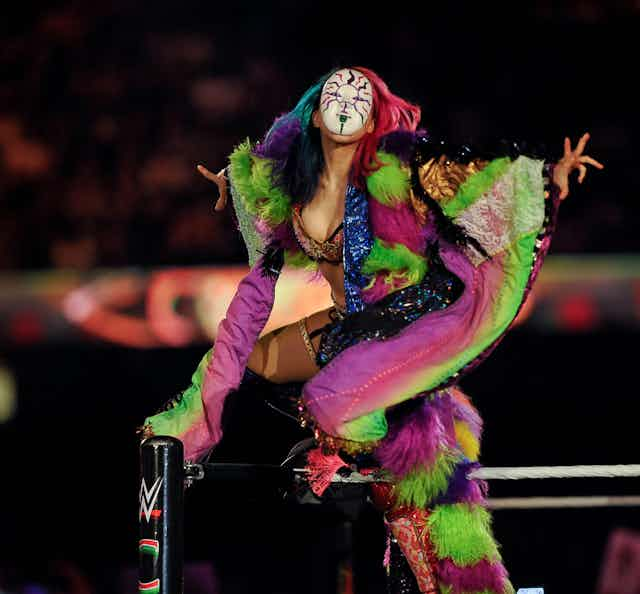In April, former World Wrestling Entertainment (WWE) writer Britney Abrahams sued the company for alleged discrimination following her objections at racist and discriminatory storylines. The lawsuit also contains some damning examples, citing “offensively racist and stereotypical jargon used in WWE scripts”.
In June, the defendants in the lawsuit – executive chairman Vince McMahon, chief brand officer Stephanie McMahon and other WWE executives – requested an extension to the deadline to respond.
These claims come a year after an investigation revealed a USD$3 million (£2.3 million) hush money settlement payment was made by Vince McMahon to a woman he allegedly had an affair with, resulting in his voluntary resignation as executive chairman and CEO. Within six months, he had reappointed himself as executive chairman, resulting in further board resignations in objection.
The above instances imply that the company’s board is seemingly in turmoil behind the scenes, yet to many, the claims of racist pitches should not come as a shock. Stereotypes have always been, and still are, a main component of WWE.
Many of these stereotypes merely regurgitate age-old offensive characterisations, which are repackaged by the sports entertainment company and distributed to a prolific audience. Its YouTube channel has 55.5 million subscribers and has amassed almost 40 billion views.
WWE is shown in the UK on BT Sport as well as having its own global streaming platform, the WWE Network, which is currently available in 180 countries in 25 languages. These images have a global reach but receive little criticism.
Apollo Crews
One of the examples cited by Abrahams is the character development of the American wrestler Apollo Crews. In early 2021, Crews debuted a new iteration of his character, claiming he was a descendant of Nigerian royalty.
Alongside this claim, Crews now sported a stereotypical Nigerian accent, as well as entering the ring with a tribal spear. These aspects – alongside a more defiant and violent persona – evoke the stereotype of the “black buck”, or “brute”. This figure is seen throughout art, literature and film as a slave to his animalistic tendencies and a threat to the white man.
Crews’ development reinforces the derogatory aspects of the stereotype seen throughout the 19th century, instead foregrounding the “otherness” of non-white cultures. The idea of othering – situating another culture in opposite to your own – is a main component of the WWE. Many of the Asian athletes also suffer similar stereotypical aspects.
Asuka
Asuka – a highly successful Japanese female wrestler – uses an illegal move called the “Asian mist”. This is where the wrestler sprays coloured liquid into the face of their opponent, causing various supposed effects from visual impairment to paralysis.
This move, currently only utilised by Asuka in a show of causing partial sight loss, relies on the perceived mysticism of Asia. No explanation is given to how these liquids are created, or how their various effects are achieved. Bright colours are utilised (red, green, blue) to demonstrate their exotic quality. When it was first utilised in the 1980s the wrestler made a show of rubbing their throat, as if extracting the fluid from a secret, magical gland.
Not only this, but Asuka has also drawn criticism from WWE veteran Jim Cornette for the way in which she communicated with another Japanese wrestler, IYO SKY, in their native tongue. Both women are shown shouting at each other, in an almost incoherent manner, screaming and sticking their tongues out, in a maniacal manner.
This stereotype can be seen as a manifestation of the ideas put forth by the post-colonialist author, Edward Said, most obviously in his seminal work Orientalism, in which he highlighted the way the west has misrepresented the east to situate themselves as superior and as a means to justify colonialism. The aspects of mysticism and poor communication skills demonstrate the backwardness and the perceived uncivilised behaviours that are key aspects of an Orientalist stereotype.
The WWE foregrounds the exotic, magical and mystical aspects of Asia, in opposition to the perseived norm of the west. During the pandemic, Asuka drew attention to the rise of anti-Asian racism in the US, but she is also arguably complicit in the continued perpetuation of stereotypical imagery through her WWE persona.
Sheamus
White characters also suffer from the stereotypical tendencies of the WWE. Take Sheamus, an Irish wrestler who made his debut 17 years ago. Celtic imagery has been a key component of his iconography throughout his career.
In an interview in 2006, he stated he wanted to move away from Irish stereotypes of “Guinness, leprechauns and Blarney Stones”, instead attempting to portray a Fianna – fierce warriors that are a main component of Irish mythology. However this distaste for stereotype seems to have waned.
In 2020, Sheamus took part in a “bar fight” where he fought his opponent in a pub-like setting, smashing bottles over each other’s heads. Links can be drawn to the US anti-immigration campaigns in the 19th century where stereotypes of Irish people were established, positing them as violent alcoholics. This is reflected in many images of the period, as well as the “no Irish need apply” campaigns.
Stereotypes of other cultures have pervaded in western media, but representation has improved in many industries, most noticeably within Hollywood. However it does not look like WWE will be changing the way it represents other cultures any time soon.
These few examples merely scratch the surface of the problem. This year the WWE also announced a merger with the Ultimate Fighting Championship creating a “live sports and entertainment powerhouse”. This raises multiple questions, but one area of interest is whether these stereotypes will continue, spreading naive representations of cultures around the globe.

Looking for something good? Cut through the noise with a carefully curated selection of the latest releases, live events and exhibitions, straight to your inbox every fortnight, on Fridays. Sign up here.

